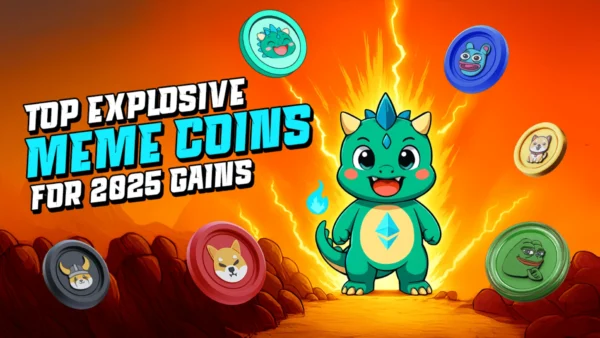- 1. Coldware (COLD): A Disruptive Layer 1 With Real-World Products
- 2. How Coldware (COLD) Is Positioned for a 10,000% Upside
- 3. Token Utility and Staking on the Go
- 4. Coldware (COLD) vs Ethereum (ETH): A Tale of Two Generations
- 5. Burn Rates and Supply Control: BNB vs Coldware (COLD)
- 6. Conclusion: Coldware (COLD) May Be the Next Massive Winner
- 7. For more information on the Coldware (COLD) Presale:
Binance Coin (BNB) and Ethereum (ETH) are both on major bull runs, with BNB nearing $765 and Ethereum (ETH) pushing toward $4,000. BNB’s ecosystem is expanding rapidly, leading all chains in decentralized exchange (DEX) volume with $191 billion in the last 30 days. Ethereum (ETH), meanwhile, benefits from consistent whale accumulation, ETF flows, and long-standing developer support. Yet for investors who missed these two massive rallies, a new name is emerging: Coldware (COLD)..

Coldware (COLD): A Disruptive Layer 1 With Real-World Products
Unlike Ethereum (ETH), which remains largely software-based, Coldware (COLD) delivers a fully integrated hardware-software ecosystem. Its Web3-ready smartphone, the Larna 2400, and ColdBook laptop come pre-installed with encrypted wallets, messaging, and a dApp store. Coldware (COLD) is a Layer 1 blockchain that prioritizes mobile-first usage — a unique differentiator in today’s altcoin landscape.
How Coldware (COLD) Is Positioned for a 10,000% Upside
With Coldware (COLD) currently priced at just $0.008, even a modest rise to $0.80 would yield a 10,000% return. This isn’t just speculation — Coldware (COLD) has already raised over $6.6 million in its presale, with more than 66% of tokens sold. Its ability to merge blockchain accessibility with mainstream consumer devices gives Coldware (COLD) a chance to reach a far broader audience than Ethereum (ETH) or Binance Coin (BNB).

Token Utility and Staking on the Go
Coldware (COLD) operates on a proof-of-stake network optimized for mobile devices. Users can stake $COLD directly from their phone or laptop, without relying on browser extensions or third-party wallets. Ethereum (ETH) offers staking too, but it requires more technical setup. Coldware (COLD) also introduces Freeze.Mint, a tool that allows anyone to launch Layer 2 tokens without writing code — opening up DeFi creation to a much wider user base.
Coldware (COLD) vs Ethereum (ETH): A Tale of Two Generations
Ethereum (ETH) is the standard for smart contracts, but it wasn’t built for mobile-native access. Coldware (COLD) enters the scene with a focus on decentralized apps that work right out of the box on real hardware. This gives Coldware (COLD) an edge in onboarding millions of new users — people who may never touch Ethereum (ETH) due to technical friction.

Burn Rates and Supply Control: BNB vs Coldware (COLD)
BNB’s tokenomics are highly deflationary, burning over $1 billion per month. Coldware (COLD) takes a more utility-focused approach, reserving 8% of its total supply for staking rewards and 7.3% for developer grants. This structured allocation supports long-term growth, while the presale-only launch ensures no exchange dumping at launch — a strategy that Ethereum (ETH) lacked at its inception.

Conclusion: Coldware (COLD) May Be the Next Massive Winner
While Ethereum (ETH) and Binance Coin (BNB) have already delivered massive returns, Coldware (COLD) represents the next frontier. It combines mobile-first blockchain usability, real hardware, staking, token creation, and Ethereum (ETH) compatibility — all in one Layer 1 platform. For investors looking for the next potential 100x or 10,000% altcoin, Coldware (COLD) might just be the best-kept secret in crypto today.
For more information on the Coldware (COLD) Presale:
Visit: Coldware (COLD)
Join and become a community member:
Telegram: https://t.me/coldwarenetwork
X:https://x.com/ColdwareNetwork
This article is not intended as financial advice. Educational purposes only.










